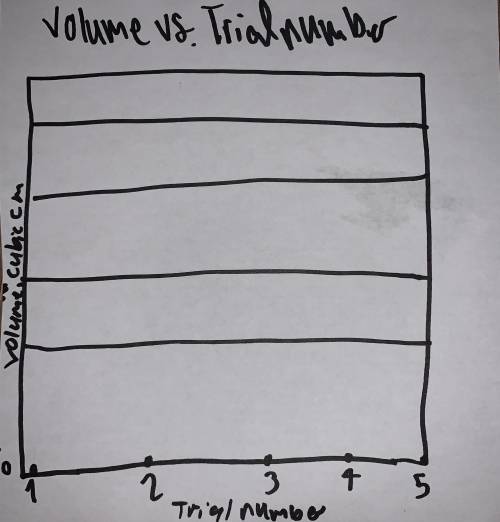1.3.3 Scientific Method Lab (Apex) Please Help!
(Procedure)
Scientific method question: What...

Biology, 13.10.2020 20:01 williamlindley2
1.3.3 Scientific Method Lab (Apex) Please Help!
(Procedure)
Scientific method question: What is the volume of air that my lungs hold?
1. Prepare the 100 cm x 2 cm strips of paper for later use.
2. Take one of the balloons and inflate it several times so you are sure you can inflate the balloon with only one breath.
3. Take a deep breath and inflate the balloon. Use the binder clip to hold the neck so no air escapes.
4. Make a measurement of the circumference of the balloon as follows: While holding the neck, wrap the paper strip around the balloon at its widest part and mark where the strip overlaps.
Figure 2
5. Let the air out of the balloon. Measure the length of the strip, up to where you made a mark in Step 4. This measurement is the circumference. Record it in Table 1.
6. Repeat the process outlined in Procedures 3-5 two more times.
7. Solve for the balloon volume using the equation below where:
volume = v
circumference = c
c^3 6π2
6π2
Record your answers in Table 1.
8. Find the average of the volumes and record it in the Table.
9. Plot the volume as a function of trial number in the graph area provided.
Questions for Scientific Method
Table 1
Circumference
Trial #1 58.42 cm
Trial #2 54.61 cm
Trial #3 50.8 cm
Volume
Trial #1 3366.92
Trial #2 2750.20
Trial #3 2213.80
Average 2776.10
Fill out the graph.
Answer questions.
(Graph questions)
1. Look at the volume values. Are the volume values larger or smaller than you expected? Explain your answer.
2. Are the volume values similar to each other, or are they quite different? Explain why you see what you see. If they are similar, explain why. If they are different, also explain why.
3. Does the volume increase with trial number, decrease with trial number, or stay about the same? Explain why you think the results are the way there are. There are many possible reasons for the data trend you see. Give some that you think are reasonable.
4. This method of measuring the volume of your lungs is probably not completely accurate. What changes would you make if you did this type of experiment to make it more accurate?
5. How would you modify the hypothesis and repeat the experiment for improved or more complete results?


Answers: 3
Another question on Biology

Biology, 21.06.2019 22:20
Which best compares habitat and niche? o niche is a place in which organisms live, and habitat is the way in which an organism fits into its habitat.o habitat is a place in which organisms live, and niche is the way in which an organism fits into its habitat.habitat is a group of organisms that live in an area, and niche is a specific species that lives in that areao niche is a group of organisms that live in an area, and habitat is a specific species that lives in that area.
Answers: 2

Biology, 22.06.2019 10:00
Which is an example of a vestigial structure? a. tail of a monkey b. fin of a fish c. flower of a plant d. tailbone of a human
Answers: 2


Biology, 22.06.2019 21:30
Kara has a plant that produces either purple or white flowers. she crosses a plant that has two recessive alleles for white flowers with a plant that has two dominant alleles for purple flowers. which result would be true of all of the offspring? a) all of the offspring would have two recessive alleles and white flowers. b) all of the offspring would have two dominant alleles and purple flowers. c) all of the offspring would have one recessive allele, one dominant allele, and white flowers. d) all of the offspring would have one recessive allele, one dominant allele, and purple flowers
Answers: 1
You know the right answer?
Questions


Mathematics, 05.04.2020 09:43

Mathematics, 05.04.2020 09:44

History, 05.04.2020 09:44






Mathematics, 05.04.2020 09:48


History, 05.04.2020 09:48



Mathematics, 05.04.2020 09:48



Mathematics, 05.04.2020 09:48




